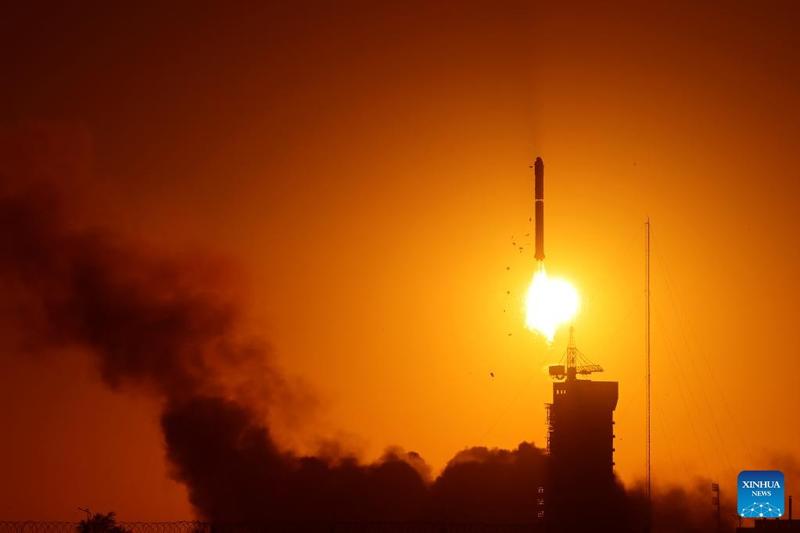 A Long March-2D carrier rocket carrying the Advanced Space-based Solar Observatory blasts off from the Jiuquan Satellite Launch Center in northwest China, Oct 9, 2022. (WANG JIANGBO / XINHUA)
A Long March-2D carrier rocket carrying the Advanced Space-based Solar Observatory blasts off from the Jiuquan Satellite Launch Center in northwest China, Oct 9, 2022. (WANG JIANGBO / XINHUA)
NANJING - China's solar exploration satellite has transmitted its first solar image since being sent to space in October, according to the Purple Mountain Observatory based in east China's Jiangsu Province.
The Advanced Space-based Solar Observatory — nicknamed Kuafu-1 in Chinese — sent hard X-ray imaging of solar flares that broke out at 1:00 am (Universal Time) on Nov 11, 2022, said Gan Weiqun, the satellite's principal scientist from PMO under the Chinese Academy of Sciences
The Advanced Space-based Solar Observatory — nicknamed Kuafu-1 in Chinese — sent hard X-ray imaging of solar flares that broke out at 1:00 am (Universal Time) on Nov 11, 2022, said Gan Weiqun, the satellite's principal scientist from PMO under the Chinese Academy of Sciences.
ALSO READ: China prepares to launch Shenzhou XV crewed spaceship
Gan said the image was taken by the satellite-loaded hard X-ray imager (HXI). Although still in the testing period, the imaging effect is excellent, allowing the effective identification of both the eruptive details and the fine structure of the Sun.
Kuafu-1 was launched aboard a Long March-2D rocket on Oct 9 from the Jiuquan Satellite Launch Center in northwest China.
The space-borne solar observatory, named after Kuafu, a giant in Chinese mythology who indefatigably chased the sun, runs in a sun-synchronous orbit, which is not hampered by the Earth's rotation, while an Earth-based telescope can see the Sun only in the daytime.
ALSO READ: Shenzhou XIV crew completes 3rd spacewalk
"ASO-S is capable of probing the Sun 24 hours a day for most of the year," said Gan. "Its longest daily time-out is no more than 18 minutes when briefly running through the shadow of Earth each day from May to August."


